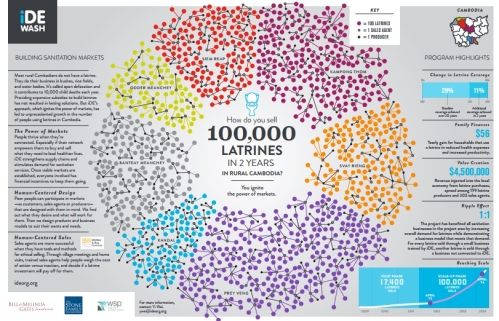Behavioral Challenges and Potential Solutions to Reach Universal Sanitation Coverage by Orlando Hernandez, USAID/WASHplus Project and Senior Monitoring and Evaluation Advisor, Global Health, Population and Nutrition (GHPN), FHI 360.
The comments below are from Dr. Hernandez’s participation at the World Water Forum 2015 and then posted to the Sanitation and Water for All website.
Behavior change specialists rely on frameworks to dissect a problem and define a strategy to address it. The Water Improvement Framework (WIF), previously named the Hygiene Improvement Framework (HIF) developed in connection to USAID WASH projects some 15 years ago, is one such framework. Given its openness and comprehensiveness, the WIF has stood the test of time. Other donors and implementation agencies are thinking along the same lines as there are other similar frameworks developed by WSP, SVN, the London School of Hygiene and Tropical Medicine, among others.
The WIF is a three-legged stool which brings together: 1) supply, 2) demand, and 3) the enabling environment. It suggests that behavior change (BC) strategies are more than mere promotion, channels and messages. They bring a human dimension to the WASH sector, and when based on the WIF’s the three elements, it guides us to design, implement and evaluate WASH activities. 
Behavior change frameworks require us to segment our audiences as social groups involved in development are not monolithic. One obvious breakdown in sanitation is a split between urban, peri-urban and rural dwellers. The needs, preferences, sanitation practices and certainly resources of urban, peri-urban and rural populations may be different. With growing urbanization throughout the developing world, coverage in peri-urban areas represent a challenge, especially when we think of tenants living in crowded quarters with no services.


